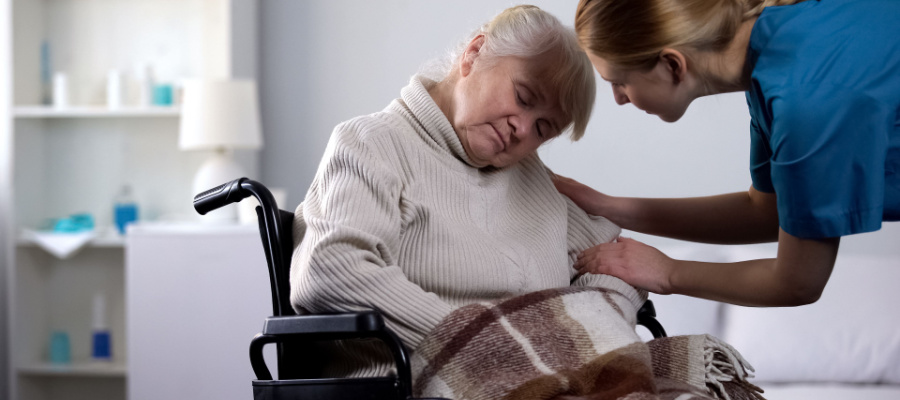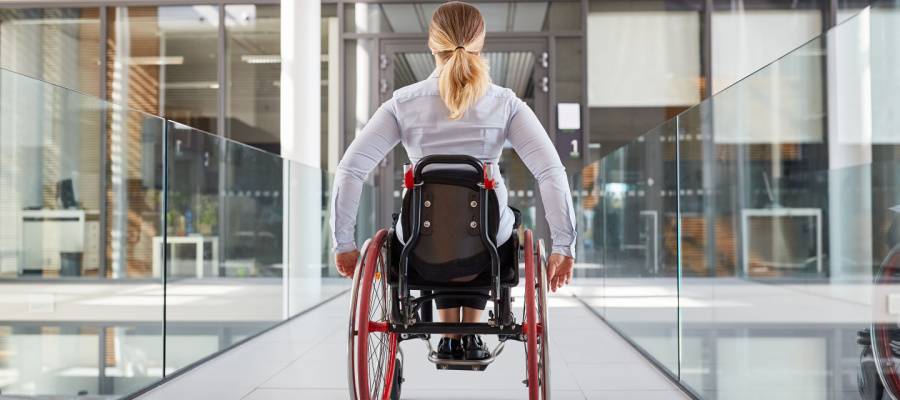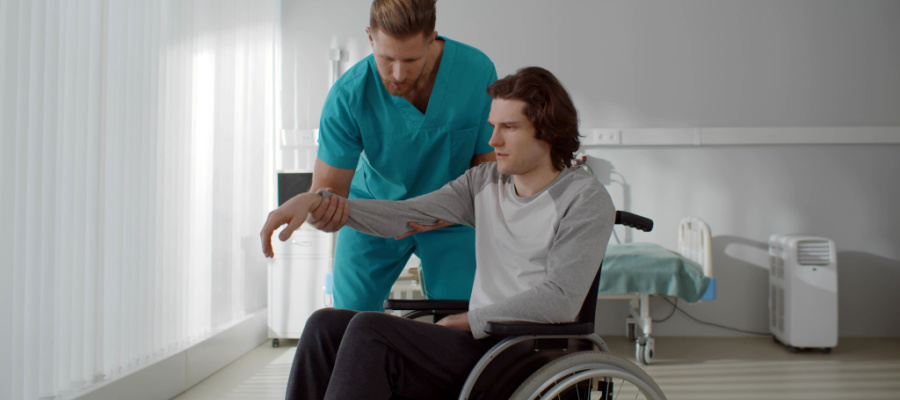Can Paralysis Be Cured in Old Age?
Paralysis is a condition that involves the loss of muscle function in part or all of the body, and it can occur due to various causes, such as spinal cord injury, stroke, neurological diseases, or infections. The ability to cure paralysis largely depends on the underlying cause, the extent of damage, and the age of the individual. As we age, the body’s natural ability to heal diminishes, but with the right treatment, physical therapy, and support, significant improvements in mobility and quality of life can still be achieved.
At Devoted Helpers in Sugar Land, Texas, we specialize in providing compassionate in-home care for individuals facing the challenges of paralysis, offering a range of therapies and support to enhance their well-being. In this article, we will explore whether paralysis can be cured in older adults, and how aging may affect recovery and treatment options.
Understanding Paralysis and Its Causes
Paralysis can occur due to several causes, including…
- Spinal Cord Injuries – Damage to the spinal cord can result in partial or total paralysis. The severity depends on where the injury occurs along the spine.
- Stroke – A stroke that cuts off blood flow to part of the brain can cause paralysis, often affecting one side of the body.
- Neurological Diseases – Conditions such as multiple sclerosis (MS), amyotrophic lateral sclerosis (ALS), and Parkinson’s disease can cause progressive paralysis.
- Guillain-Barré Syndrome (GBS) – An autoimmune condition that causes the body’s immune system to attack the peripheral nerves, potentially resulting in sudden paralysis.
- Infections – Certain infections, such as polio or meningitis, can cause paralysis.
Can Paralysis Be Cured in Older Adults?
The possibility of curing paralysis depends on multiple factors, including the cause, extent of nerve damage, and overall health of the individual. While full recovery from paralysis may be challenging, especially in older adults, certain conditions may be treatable with medical intervention, rehabilitation, and support.
Spinal Cord Injuries
Spinal cord injuries often result in permanent paralysis, particularly if the injury involves significant damage to the spinal cord or if the injury occurs at a high level of the spine (cervical region). Unfortunately, spinal cord injuries are typically irreversible, even in younger individuals. Medical advancements, such as stem cell research, neuroplasticity therapies, and spinal cord stimulation, are showing promise in helping individuals recover some level of function.
In older adults, the likelihood of a complete recovery from spinal cord injury is lower due to age-related factors, such as slower healing and less tissue regeneration. Nevertheless, rehabilitation and adaptive technologies, such as wheelchairs and exoskeletons, can help improve mobility and independence.
Stroke-Induced Paralysis
When a stroke causes paralysis, recovery is possible, but it may take a long time. The degree of recovery depends on the area of the brain affected, the extent of damage, and how quickly treatment was administered after the stroke. Younger individuals may experience more complete recovery due to the brain’s ability to reorganize and form new connections—a process known as neuroplasticity.
For older adults, neuroplasticity may be less effective, and complete recovery may not be achievable. Physical therapy, speech therapy, and occupational therapy can help improve movement, communication, and self-care abilities. Many stroke patients can regain partial function and lead independent lives with the right support and rehabilitation.
Neurological Diseases (e.g., ALS, MS)
Progressive neurological diseases like amyotrophic lateral sclerosis (ALS) and multiple sclerosis (MS) can cause paralysis over time. Unfortunately, these conditions are degenerative, meaning they worsen over time, and there is currently no cure for them. The goal of treatment is to manage symptoms, slow progression, and improve the individual’s quality of life.
In older adults, these diseases may progress more quickly due to the aging process, but symptom management through medication, physical therapy, and assistive devices can still improve daily living. Advanced palliative care and hospice care may also be appropriate to ensure comfort.
Guillain-Barré Syndrome (GBS)
Guillain-Barré Syndrome can cause sudden, temporary paralysis due to the immune system attacking the peripheral nerves. Fortunately, GBS is often reversible with proper medical treatment, such as immunoglobulin therapy or plasma exchange (plasmapheresis).
In older adults, recovery may take longer, and some may experience residual weakness or fatigue after the initial recovery period. With early diagnosis and treatment, many people with GBS experience a full or partial recovery.
Infections (e.g., Polio, Meningitis)
Infections such as polio and meningitis can cause paralysis by damaging the spinal cord or brain. While polio-related paralysis is mostly a concern in older cases from earlier decades, meningitis and other infections can still cause sudden paralysis. The degree of recovery depends on how quickly the infection is treated and how severe the damage is.
In cases of polio or long-term paralysis from meningitis, paralysis is often permanent, but physical therapy and the use of assistive devices can help manage the condition.
Age-Related Factors Affecting Recovery
As individuals age, the body’s ability to heal and regenerate tissue decreases. Older adults may experience a slower response to treatments, and the healing process may be more challenging compared to younger individuals. Some of the age-related factors that affect paralysis recovery include…
- Reduced Neuroplasticity – The brain’s ability to form new neural connections decreases with age, making it harder to recover function lost due to brain or spinal cord injury.
- Weakened Immune System – An older immune system may be less effective at fighting off infections or promoting healing in the nervous system.
- Comorbidities – Older adults often have additional health conditions (e.g., heart disease, diabetes) that may complicate recovery and make rehabilitation more difficult.
- Decreased Muscle Mass and Strength – Aging naturally causes a reduction in muscle mass and strength, which can limit the effectiveness of rehabilitation efforts.
Despite these challenges, older adults can still benefit from rehabilitation therapies, which aim to maximize function, improve independence, and prevent complications like pressure sores, muscle atrophy, and joint stiffness.
Can Paralysis Be Prevented or Managed in Old Age?
While a cure for paralysis may not always be achievable in older adults, there are steps that can be taken to manage the condition and improve quality of life. These may include…
- Physical Therapy – Engaging in regular therapy can help improve mobility, reduce stiffness, and prevent complications.
- Occupational Therapy – This type of therapy helps individuals regain independence in daily activities, such as dressing, eating, and bathing.
- Assistive Devices – Wheelchairs, braces, exoskeletons, and other assistive technologies can help enhance mobility and independence.
- Palliative Care – For progressive conditions, palliative care can offer comfort, symptom management, and support for both patients and families.


